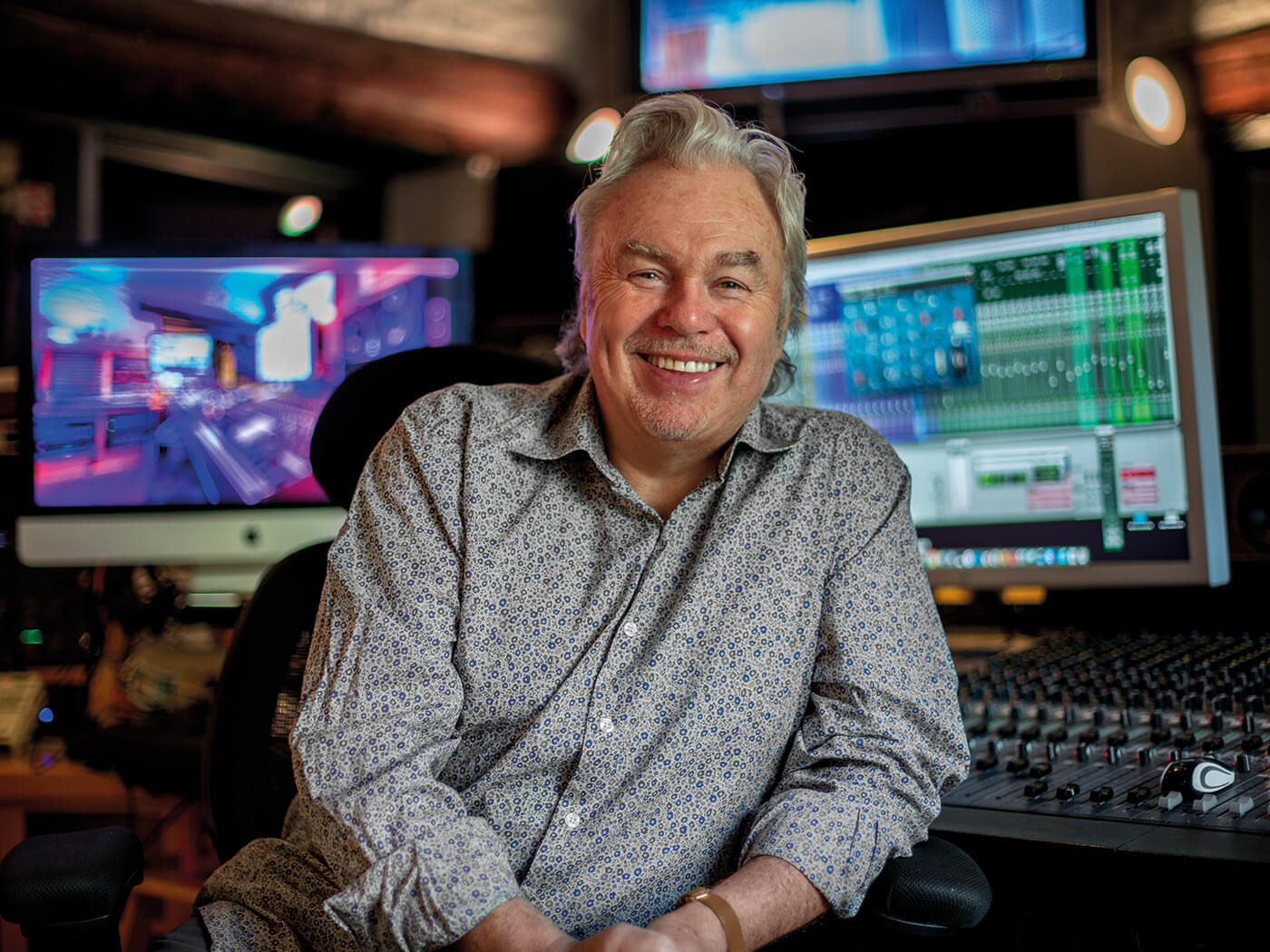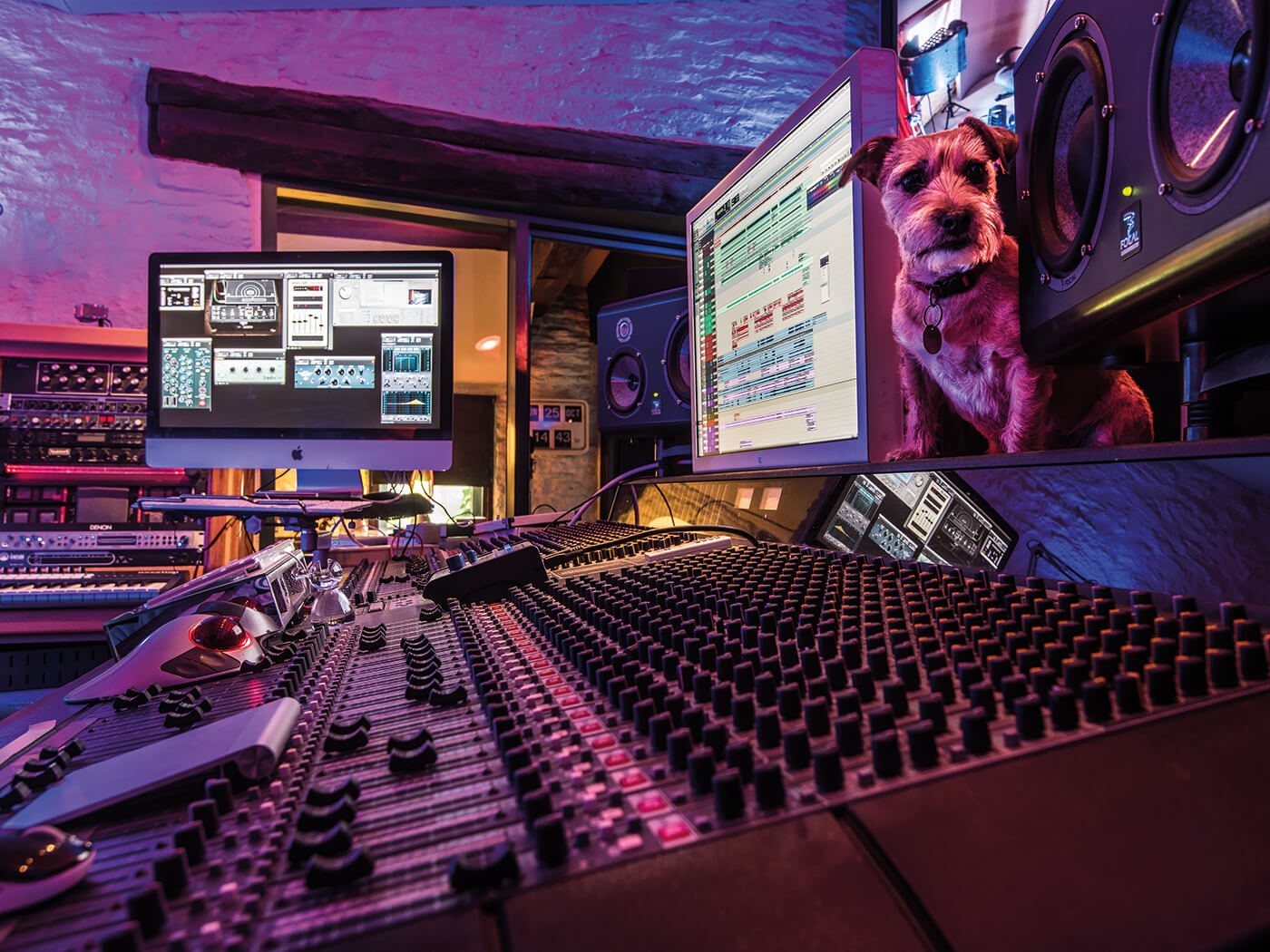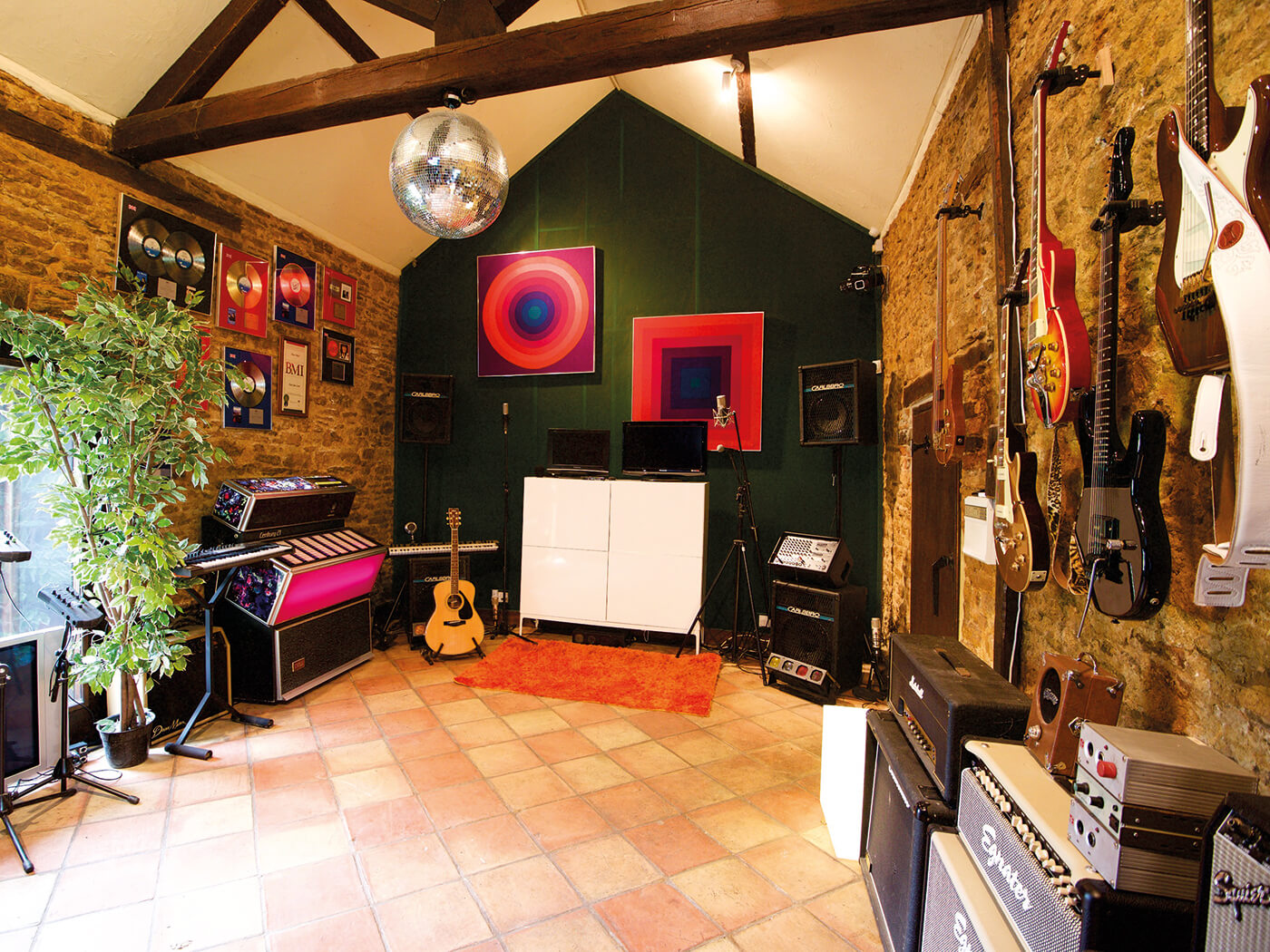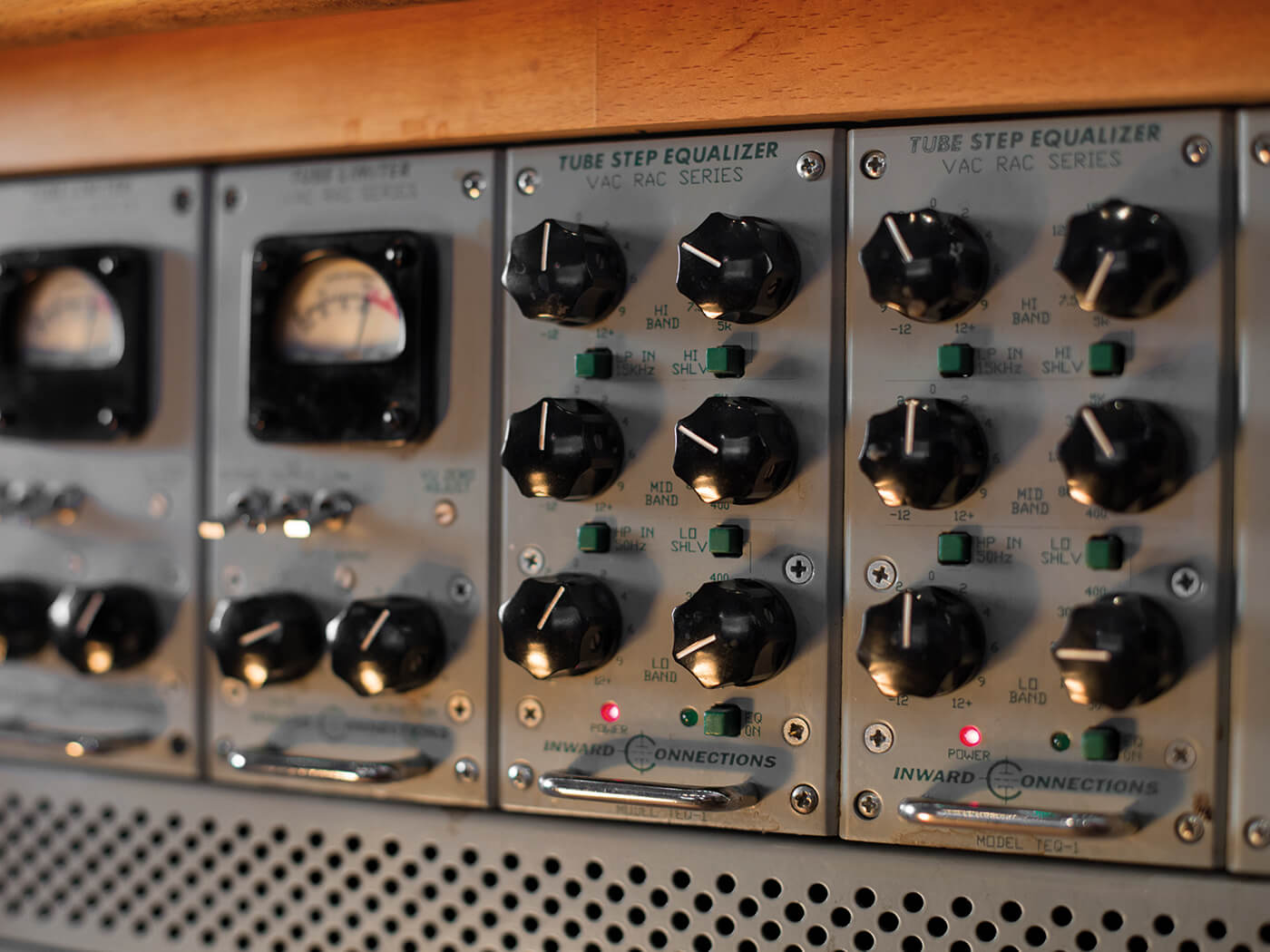Interview: Gary Stevenson chats about his process and studio
Pioneering Go West and ABC producer Gary Stevenson has seen a seismic shift in studio tech over an extraordinary production career. Here, he recalls when you could spend the cost of a house on the latest cutting-edge technology, but how those investments always (well, nearly always) paid off…

Photography by Andrew Ogilvy Photography
Gary Stevenson has been in the upper echelons of production for three decades. He’s worked on an incredible array of projects: from defining the slick, mid-80s sound of Go West to producing The Lexicon Of Love II, the follow-up to one of the most iconic LPs ever released. Gary has also seen it all when it comes to gear.
Think you’ve spent a lot of money on equipment for your studio? Think again. Unless you were a producer back in the 1980s, we can pretty much guarantee you’ll have spent next-to-nothing compared to producers like Gary. This was a time when you could spend the price of a house on digital sampling, the cost of a supercar on digital multi-tracks, or the value of a small island on a mixing desk… And Gary did just that. Even as a teenager, he’d started dabbling with the best that technology offered at the time.
“I started just writing and recording music in my bedroom,” he recalls. “I really enjoyed that and started off with an Akai 4-track machine, where you bounced from three tracks down to one, before I then moved on through the Portastudio and 8-track phase. I loved all that; my bedroom studio was kitted out with the Roland RE-201 and a Super ‘C’ MasterRoom stereo spring reverb. I used the RE-201 extensively and can’t believe the emulations of it now. They are so good; exactly the same. I pushed that unit to the limit back then and it still makes me smile when I use the plug-in now.”
Counter culture
Gary’s initial ambitions were more band-orientated than studio-based, and he started playing live in a band called Sly Fox, but the limelight wasn’t as attractive as he’d initially thought… “I found I didn’t really like playing live,” he says. “If you get it wrong, you can’t go back and change it – and I’m a bit of a perfectionist like that. Plus, I didn’t really like being up there on stage, showing all I’ve got. I used to get really nervous – it was really stressful, even at 19 or 20!”
By landing a guitar-demonstrator role in a music-equipment store, Gary found a job that allowed him to learn all about the latest studio gear while also meeting working musicians. “It was a dream if you were trying to be in a band and hopefully, you’d get your gear cheaper, too!” he laughs.
“You would meet lots of like-minded people. I met many influential people including Dave West, my keyboard player, through working at the shop. We would work on new tunes when the shop wasn’t busy, plus the owners also allowed us to go and rehearse in the store after hours.”
All the time, Gary was stocking up his own 8-track studio with gear and learning about production, but his band-based ambitions were just as strong. He and Dave West formed Radar – so-called because his studio was based near Heathrow airport! Thanks to an in-depth knowledge of the cutting-edge gear they were using, plus a no-holds-barred approach to recording, they started forging a noteworthy sound for the time, which soon attracted interest from record companies.

Eventually, they signed a publishing deal for £15,000 – a lot of money back in 1983 – which Gary immediately had plans for… “I spent it on an Emulator sampler, the whole lot!” he says. “It was the best thing about. There were Fairlights, but they were well out of my price range, plus the Emulator had its own unique sound – analogue-y and grainy, not bright and sparkly. We already had a Yamaha DX7 which was the opposite, quite bright. It was a big decision. I suppose 15 grand in 1983 was about the same as 35 grand now!
“But I just seemed to know what was right to buy in those days and it allowed us to do so much, from sampling drums to manipulating keyboards and vocals. Back then, the whole process was new and exciting; we utilised the Emulator to its full, so it was worth it.”
Go west
Gary’s studio was now based around a Brenell 8-track reel-to-reel, used to produce Radar’s sound. However, that sound and setup also brought interest from other musicians such as Peter Cox and Richard Drummie, who would eventually form the band Go West. “They heard some of the demos I was working on with Radar,” Gary explains, “and asked me to get involved in some of the stuff they were working on. Their manager John Glover really liked the work I did with them and asked me to go into a studio in Chipping Norton to record and produce two tracks. We had four days to do it and those songs were We Close Our Eyes and Call Me.”
“I went in there relatively green,” he continues, “but it was heaven. It was expensive going into studios back then and I grabbed the chance with both hands and hardly slept for the four days – it was just an amazing experience. I loved the sound of the Trident desk there and that’s where I discovered the AMS digital sampler. That was a gamechanger, that’s for sure. It was really great, because you could trigger externally and the sound quality was wonderful; we’d use it for things like kicks and snares. Of course, it’s so easy to do these days, but then it was pretty new… I also ‘dropped in’ a lot of the drummer’s performance, especially for fills and so on, which gave it a more played feel.
“Richard and Peter weren’t just spectators, they had their own great ideas and my job was to translate them to tape. The most special projects I’ve worked on are the ones where the artists were/are a major talent under their own steam. We are not talking X Factor karaoke people here – don’t get me started!”
We Close Our Eyes and Call Me would, of course, go on to be huge hits for Go West – and the released versions were largely the same tracks as those demos recorded in Chipping Norton. They also got Go West their first record contract. “Yeah, eventually they got offered a deal with those recordings,” says Gary.
“The main thing about it was I basically gave them my band’s sound. I just did the vibe that I loved, so I (unconsciously) transferred what we were doing with Radar over to their songs, that’s what the record companies picked up on. I often wonder what would have happened if I hadn’t done that, but they had the songs, we had the sound.”
Go West were approached by several record companies, but insisted on Gary being onboard for their debut album, as he had defined their sound up to this point. They were under pressure to use a more experienced producer, top of the list being Nik Kershaw’s producer Peter Collins, who had just completed the album The Riddle.
“Every record company said ‘no’, because I hadn’t done anything else, all but Chrysalis America, a guy called Ron Fair, who said: ‘If this guy is part of the sound, then let’s get him to do the record,’ and that’s where it went from there. The boys were so loyal to me, they were brilliant.”
Gary now found himself producing one of the biggest acts of the time, so eventually abandoned plans for his own band. He helped Go West forge a perfect sound that defined much of the 80s’ record production – a slick blend of funk, sampling and great songwriting – and one that’d help him forge both a reputation and career. “I’ve lost count of the number of musicians or producers who have told me that record [Go West] had a major influence on them,” he explains.
“A lot of them say to me that they’d never heard anything like it before, but I was just doing what felt right while using all the things I’d gleaned from listening to bands like Duran Duran, The Fixx and anything by Trevor Horn, who, of course, was my hero. None
of this would have been possible, though, without the great songs, and Peter Cox’s amazing vocals.”
More gear please
With that initial success came a financial reward which, you may not be surprised to learn, Gary ploughed straight back into his studio. “Yeah, once the money came in, the first thing I did was buy an Otari MTR-90 and an Amek 2500 48-channel desk,” he says.
“The MTR-90 24-track was wonderful. I remember going to a place called Turnkey to get it and my good friend Garry Robson gave me a great deal. We’d been in a bedroom band with Gary Numan, believe it or not! That was early days, when I was at school, I used to go around Gary Numan’s house with Garry Robson – it was the ‘three Garys’, doing sort-of Bowie tracks! Anyway, Garry has been helping me with gear since then, the Otari MTR-90 was 30 grand and the Amek 95 grand, which I paid cash for! I’ll never forget going up to Manchester with 95 grand in a holdall to pay for it (special deal, nudge nudge, wink wink).

“It was an enormous desk – and was very sexy. At the time, you had to compete with the big boys, which meant having to hire expensive studios for around £1,200 a day. Getting a desk like that meant that I would not have to worry about having a bad day in the studio, if nothing worked out, then I had only lost time, not money.”
The Rick role
Gary spent the rest of the 80s working on a wide variety of projects, including the slick pop of Bros and Pepsi & Shirlie, plus various new bands and even taking in the odd soundtrack, such as Rocky IV, while all the time expanding his production knowledge. In the 90s, though, he scored even bigger success with none other than Rick Astley.
“I’d just finished doing an album with Simon Townshend, Pete’s brother,” he explains. “It was one of the best albums I have ever worked on and no one has ever heard it, as it’s never been released! He was amazing: great songwriter, and a bit of a rock ’n’ roll nutter, and his drummer was the wonderful Mark Brzezicki from Big Country. Rick’s manager contacted me and said: ‘We’d be interested in doing a record with you.’ It was a bit different to what I was doing at the time which was more rocky, but they came over to my studio on the Isle of Man and had of demos with them. We went through some ideas and they said: ‘Let’s do it’ and I did the whole album.”
The LP, Free, was Rick’s third solo album and his first after leaving the Stock, Aitken & Waterman production stable. The pressure was on for Gary, then, but its recording would leave him with some of his career highlights. “I was in Galaxy Studios in LA recording the single Cry For Help with Rick and there were some major experiences there,” he remembers.
“One was the choir that we used – the Andraé Crouch Choir. They’d worked with Madonna on the track Like A Prayer and they were fantastic – it was just amazing working with them all in the studio. I used Vinnie Colaiuta on drums and he was brilliant. The whole feel of the track changed – he was just wonderful. And that’s part of good production: you don’t have to be responsible for the great bits, you just have to be responsible for making sure they happen. You have to create the environment and the feel for the people in the studio, so they feel positive.”
The single hit Top 10 in both the States and the UK. Rick eventually took a long break from music, but came back with the self-produced album 50 a couple of years ago, which would lead to his current resurgence in success. What does Gary think about Rick’s comeback?
“I’m so pleased he’s doing so well now, but the bugger’s doing it himself!” he laughs. “I was disappointed I wasn’t involved, but at least he didn’t get another producer in. I think he did a great job and the sales reflect that. I went down for a playback at his house in Hampton Court and I thought it was really excellent, amazing that he’d played and produced everything himself.”
Follow a classic? I’d love II
One huge album that Gary was involved with was The Lexicon Of Love II. This was the follow-up to the Trevor Horn-produced ABC album which is widely regarded as one of the pinnacles in music production. No pressure then, Gary…
“You’re following Trevor Horn, but without Trevor Horn’s budget,” he says. “I mean, it wasn’t silly cheap. We did have Anne Dudley arranging the strings, which was very special and something most budgets don’t cover these days, so I have no complaints. We added the strings later in the production when the backing tracks were already finished.
“We had two days at Angel Recording Studios in Islington to record them, but I don’t think I would do it that way again, because once we added the strings, I realised that a lot of the work we’d already done was now clogging up the production. It just became superfluous, because what was going on top was so lovely.”
Lesson learnt, Gary tried a different approach to string production on the more recent Talking To The Moon album by Tony Hadley.
“I’d already done an album with Tony back in 1997,” he explains. “For this one, though, he’d heard the ABC The Lexicon Of Love album and he liked the strings, saying: ‘Gal, we’ve got to use those on my album!’. However, we didn’t quite have the budget to reproduce them for his record, so we used a smaller string section. Plus, I worked on the arrangements first with my programmer.
“I was really pleased with the result and it enabled me to work the instrumentation around them before going into the tracking stage. They were then transcribed and recorded with a 12-piece string section and afterwards, I thickened them out with some programmed strings.”
Real feel
Gary’s studio is now a mix of the cutting edge with some classic pieces of equipment that he has retained over his four-decade career. “It’s in a barn in the grounds of the house with a great Cotswold-stone live room,” he explains.
“It’s a lovely environment and a good-sized place to fit a band in and somewhere to do drums. That is really important for me, as you can’t do that in a home studio. You can program drums, of course, but there is something about the air moving, the groove and everything else that real drums make, you know? Wherever possible, I will use real people.
“You not only get that ‘feel’ thing, but I like to pull ideas out of them that myself or the artist would not normally come up with. Having said that, with budgets these days, it can complicate things if the session doesn’t go well – that’s when I get my guitar out, or reprogram. I’d love to be able to do the Steely Dan thing and try three or four rhythm sections – now that’s bliss!

“I have an Otari Status mixing desk,” he continues. “I had the first one in the UK and I still have a leaflet, with me looking very young on an advert for it. It has 96 inputs with a digital centre section where you can control multiple channels from, but other than that, it is all-analogue, so the best of both worlds – and I love it. The EQ on the desk is very good, but if I want really warm bottom end or sparkly top, I’ll use my outboard. I still have older bits of outboard I use, like the Klark Teknik graphics, my old BBE Sonic Maximizer or Massenberg EQs.
“Everything goes through my two Inward Connections Vac Rac 4000 racks. They are just wonderful old-fashioned EQs, limiters and tube-mic preamps. I don’t have a lot of outboard, just what I need, so the Vac EQ and limiting is just beautiful. I have a couple of 1970s 1176s, but everything else is plug-ins, because they are that good. Back in the 80s and 90s, I had a Lexicon 224 (still my favourite reverb ever) and two Lexicon 480s, but now I use the plug-ins. I use Pro Tools, of course, which is my choice of DAW and always will be – I love it.”

With such a production-ready and curated setup, we ask, what does Gary have planned for the future? “I’ll be opening up my studio, including myself, to new unsigned artists,” he replies. “The website is live at stevensonics.com. Plus, I’m on the lookout for a manager. I haven’t had one for over 20 years and I want to spend more time in the studio, rather
than negotiating projects.”
Finally, after 40 years at the top, does Gary have any wise words for anyone wishing to get into production? “That’s a tough one, as most productions these days are so different,” he says. “I’d try and get work in a studio, though, as you need to get in there and see how other people work, whether it be their minds – very important if you’re going to be a producer – or technique. The danger of just working alone in a bedroom studio, which of course can be amazing these days, is that you can be too inward-looking and not expand. That did work for me in the early days, but later, I found it tough moving out into other working environments. I guess it was a steep learning curve, but I managed to get through it!”